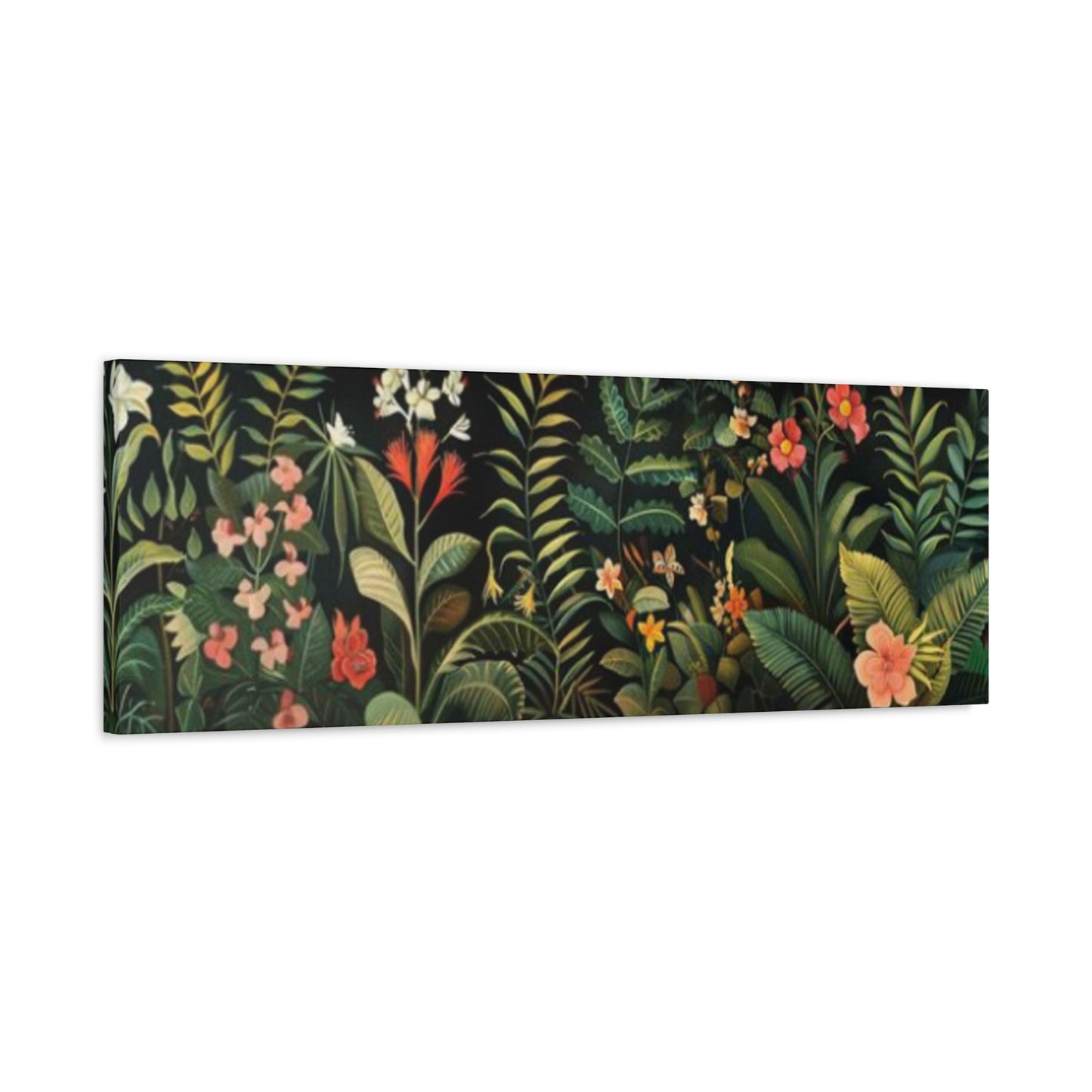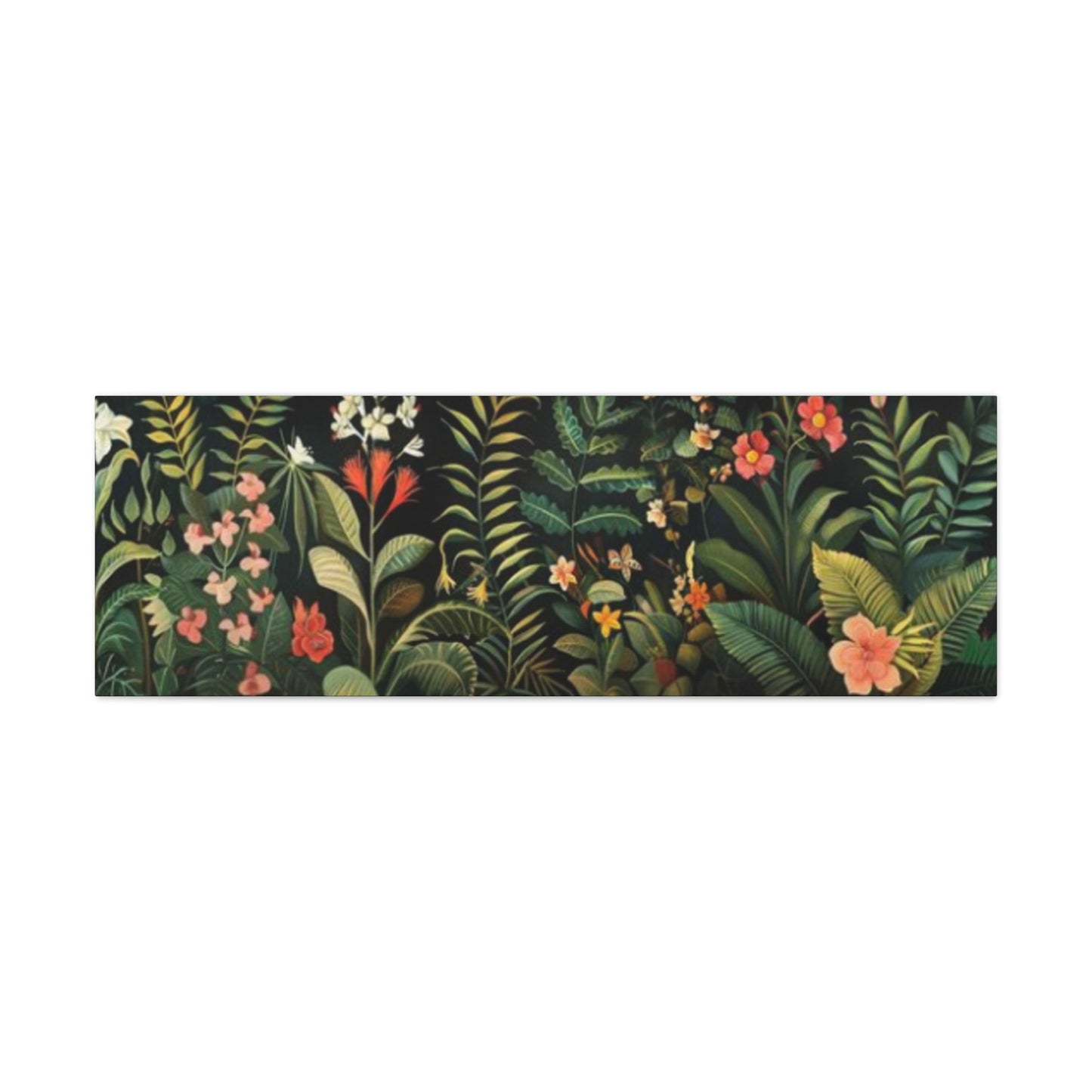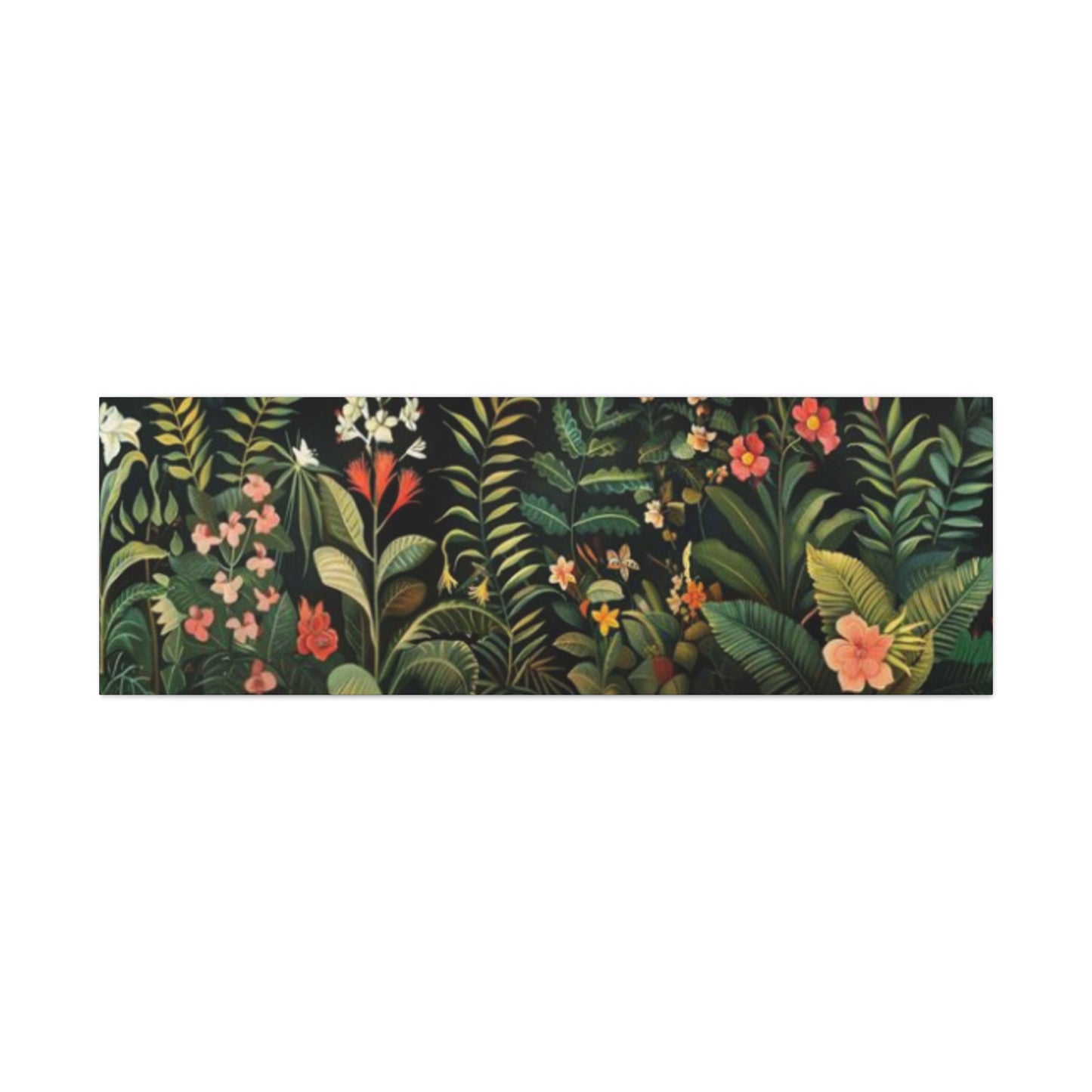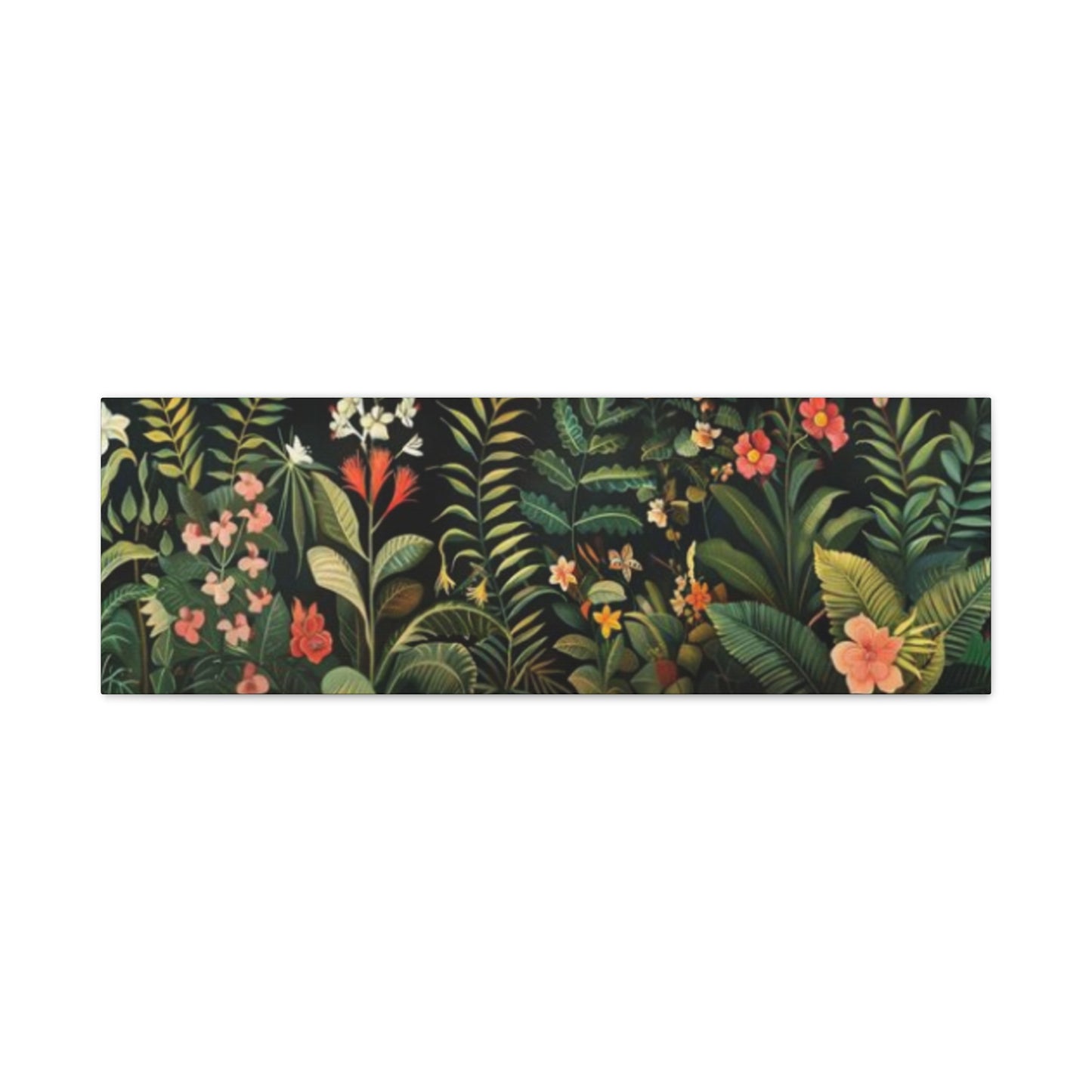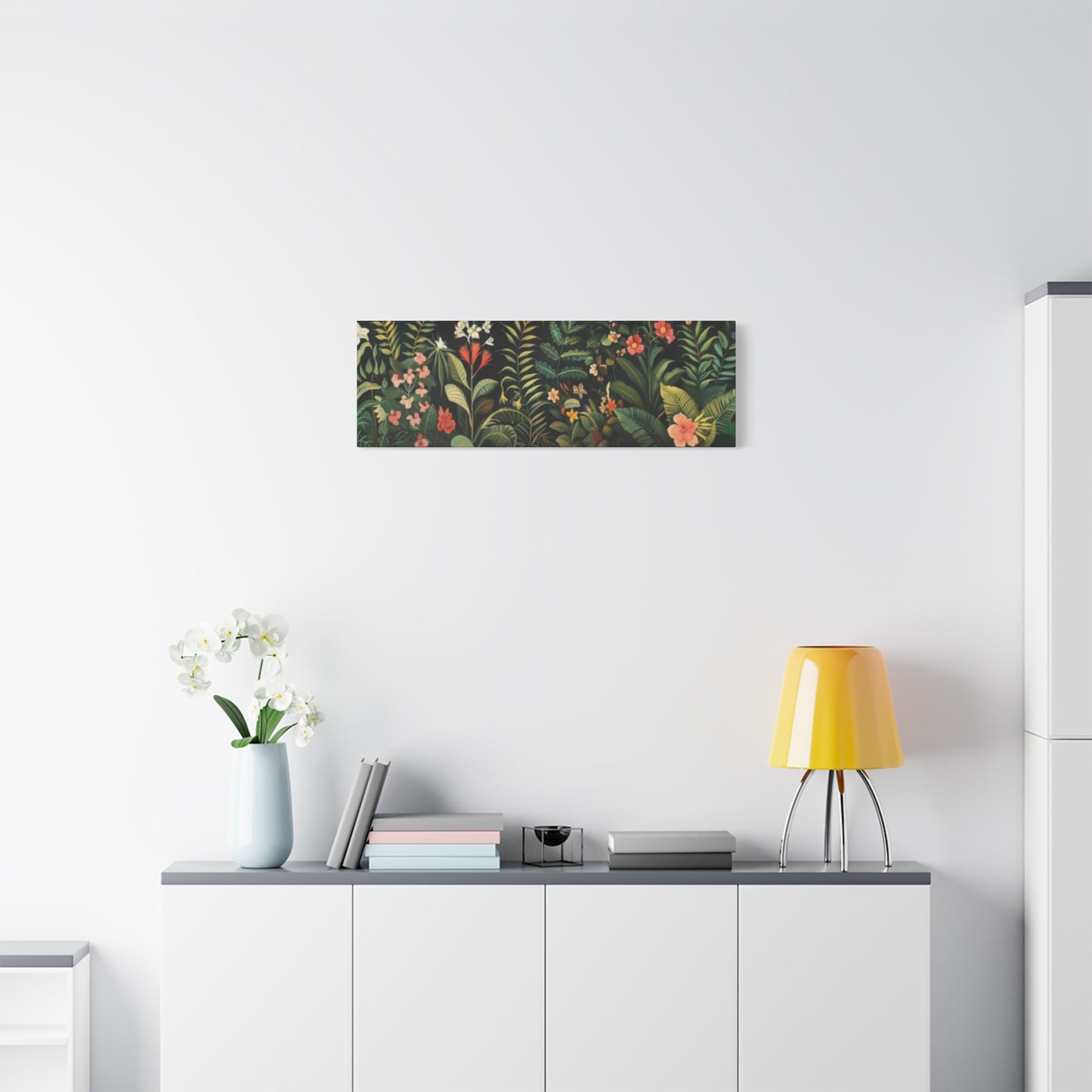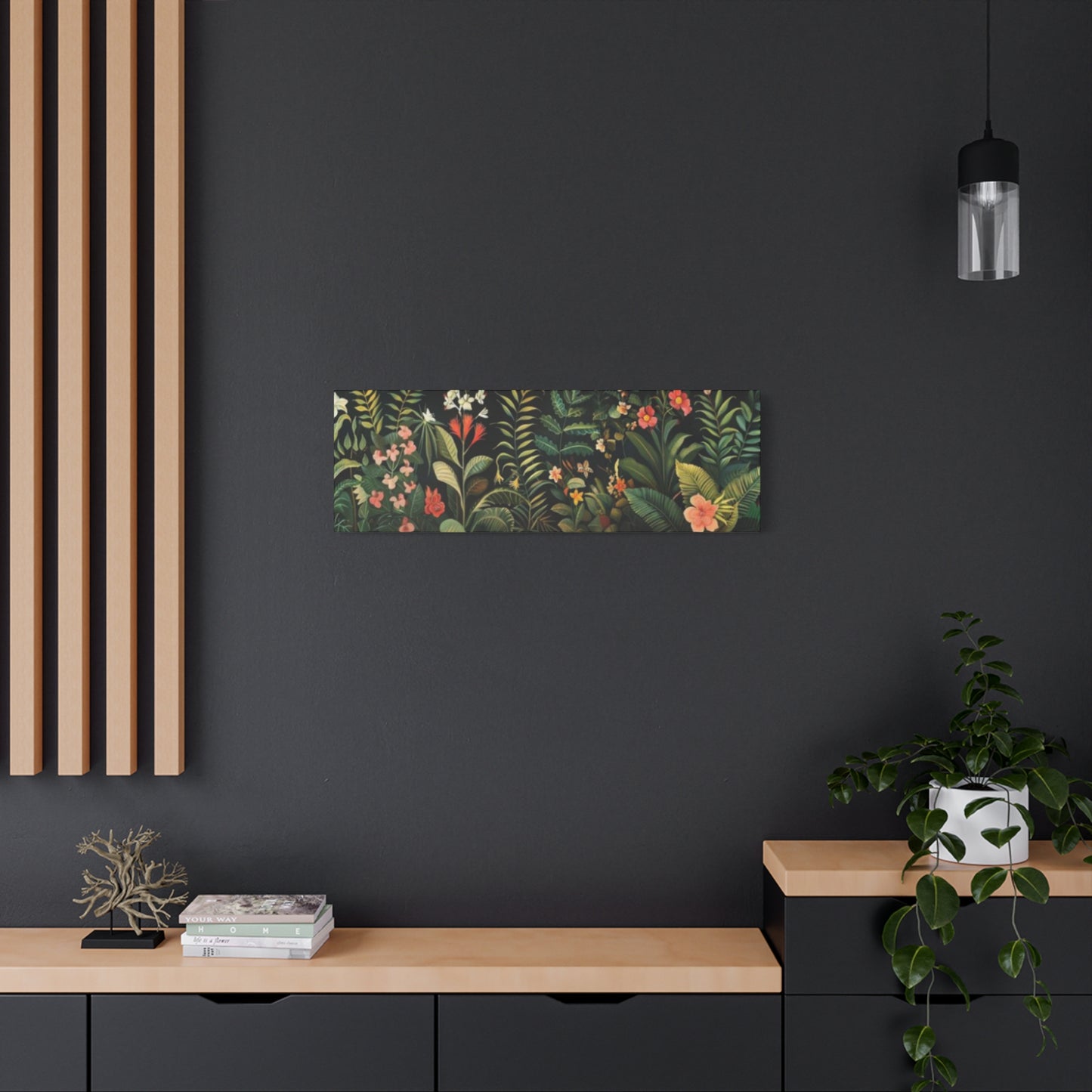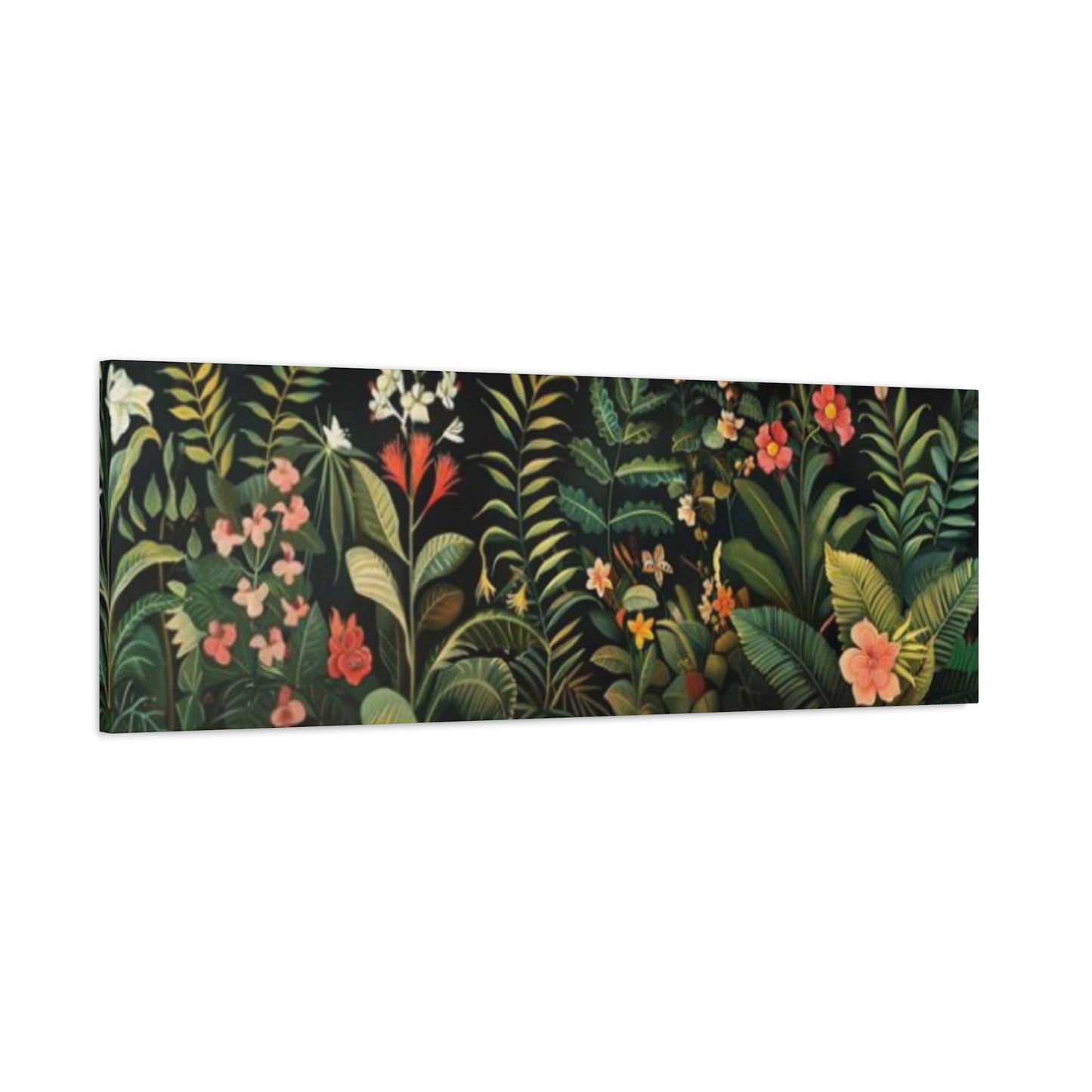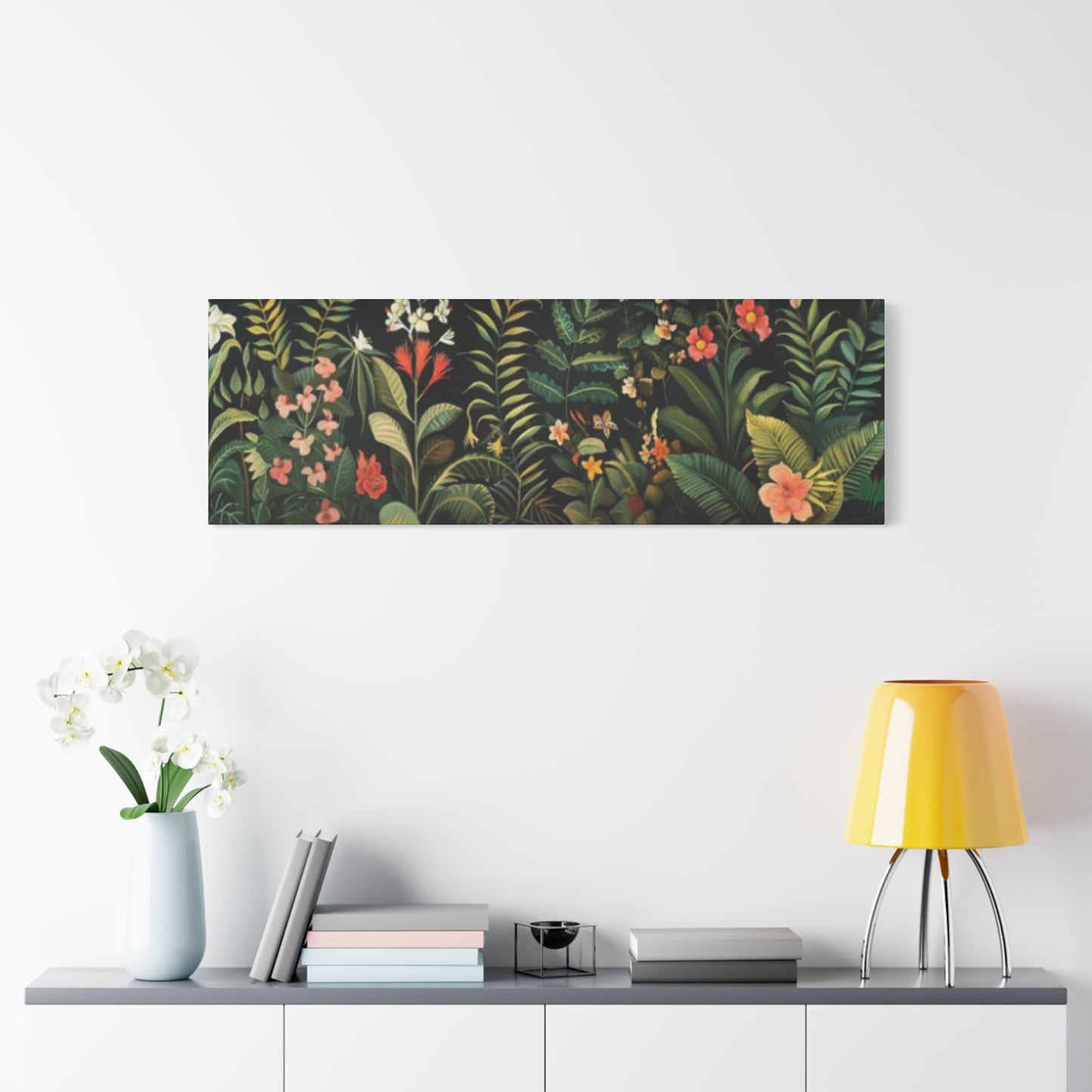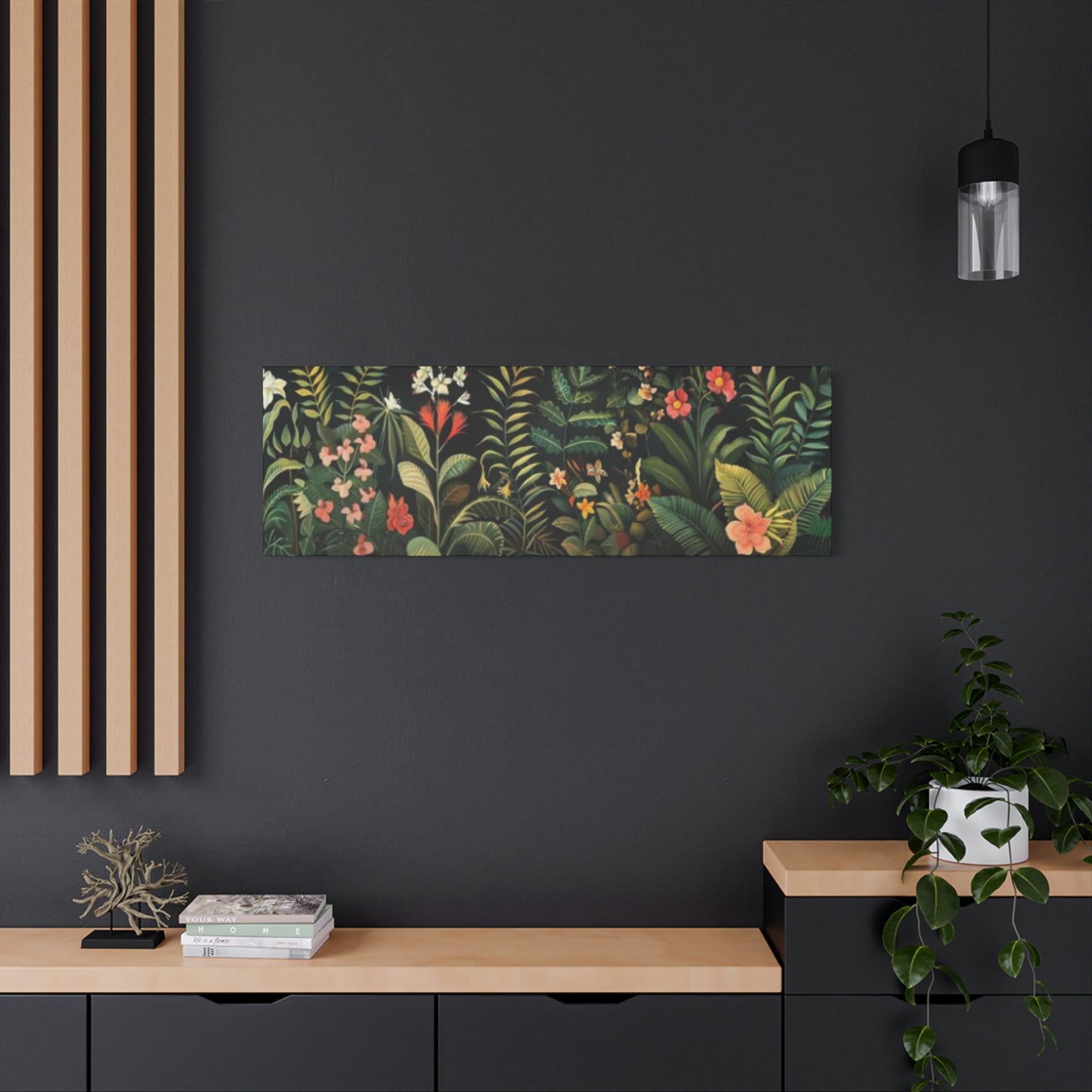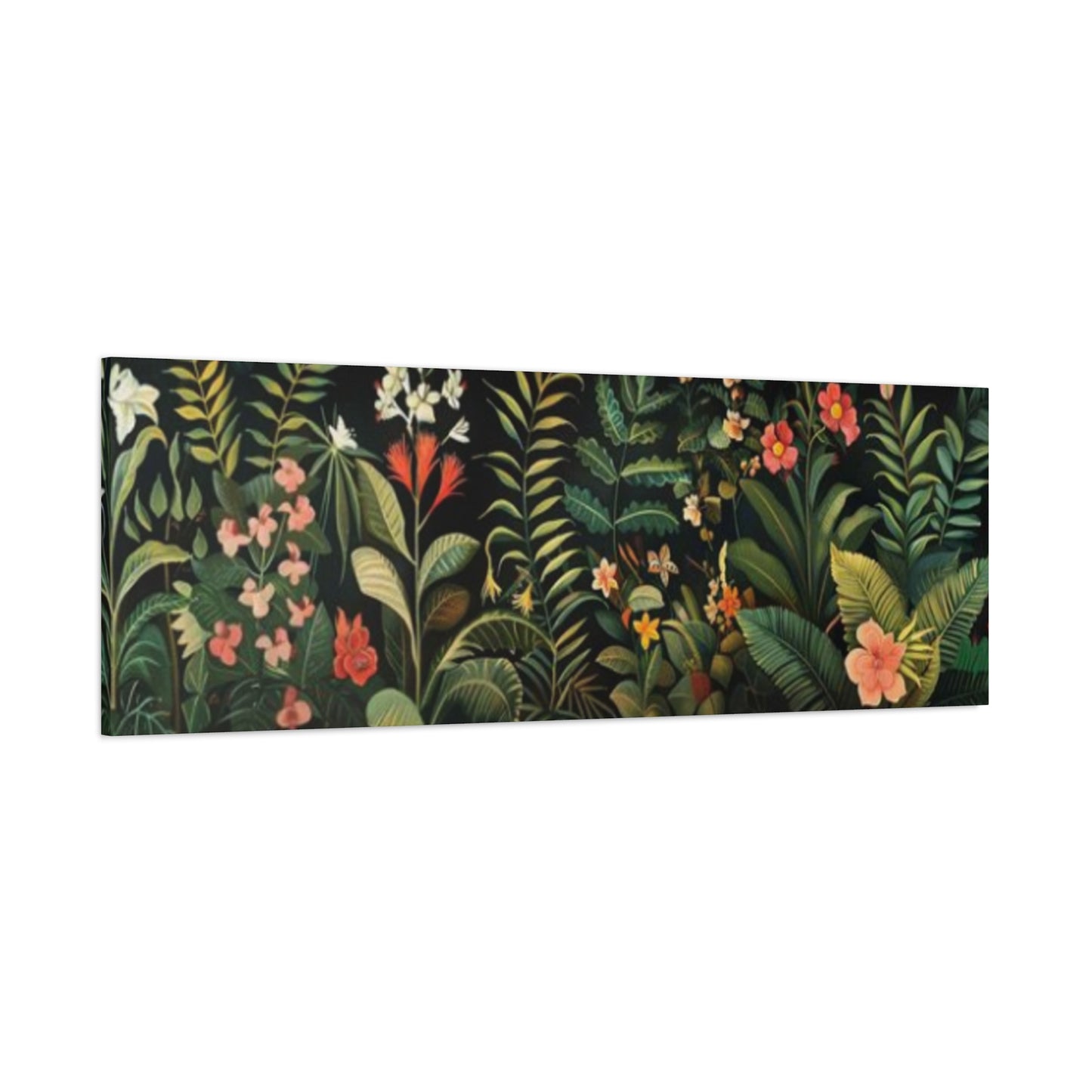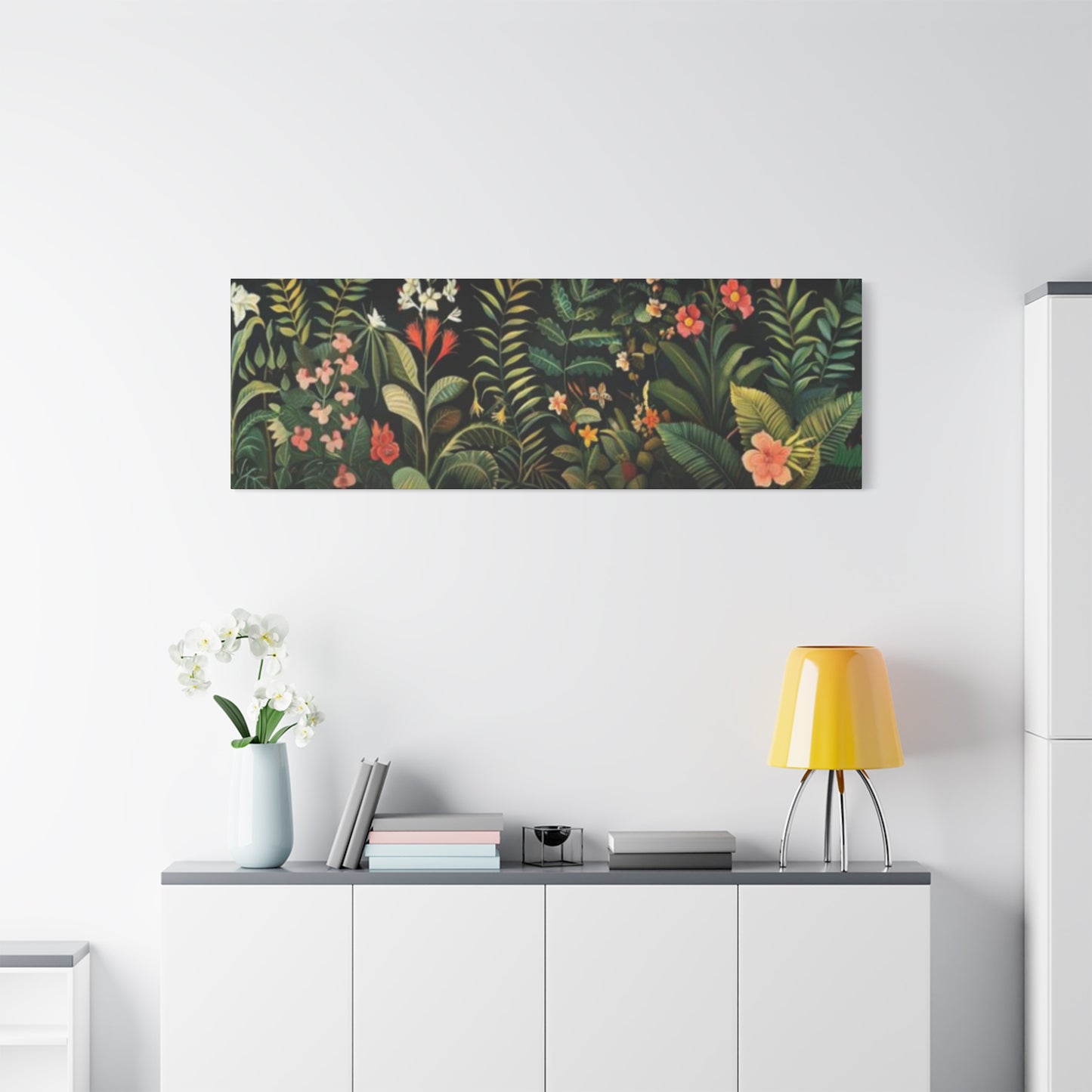Expansive Beauty: A Definitive Exploration of Panoramic Floral Wall Art
In the quest to create personal sanctuaries within our homes and professional settings, the elements we choose to adorn our vertical surfaces play a pivotal role. They are not merely decorations but reflections of our aspirations, memories, and the atmosphere we wish to cultivate. For centuries, art has been the primary medium for this expression, with nature serving as an inexhaustible muse. In recent years, a particularly captivating format has blossomed in popularity, offering an immersive and breathtaking connection to the natural world: panoramic floral wall art. This art form, characterized by its elongated, wide-view perspective, captures the sweeping grandeur of a field of wildflowers, the delicate details of a row of blossoming trees, or the vibrant energy of a dense garden. I
t moves beyond a simple, contained image, inviting the viewer to step into a vast, serene landscape. Unlike standard portraits or square canvases, a panorama mimics the natural sweep of human vision, creating an experience that is both engaging and deeply calming. This extensive exploration delves into every facet of panoramic floral wall art, from its profound ability to instill tranquility and its suitability for large, modern dwellings, to the practicalities of styling, selection, and its rising prominence as a defining trend in contemporary decor. We will journey through the myriad ways these magnificent pieces can elevate an environment, transforming a simple wall into a window to perpetual spring and boundless natural beauty.
Cultivating Tranquility with Panoramic Floral Wall Art
The human connection to the natural world is primal and profound. In an increasingly urbanized and digitally saturated existence, the innate desire to connect with nature, often termed biophilia, has become more pronounced. This yearning for organic beauty and calm is a powerful driver in how we shape our living and working environments. Panoramic floral wall art serves as a direct and impactful conduit for this connection, offering a potent method for cultivating tranquility within any setting.
The very format of a panorama is instrumental in this effect. Its wide, sweeping vista encourages the eye to travel, to wander across a landscape of petals and leaves, mimicking the experience of gazing out over a real field or garden. This visual journey is inherently meditative, breaking the rigid confines of a standard frame and creating a sense of openness and release. It draws the mind away from daily stressors and invites a moment of peaceful contemplation, effectively lowering heart rates and reducing feelings of anxiety.
The subject matter itself is, of course, central to this calming influence. Flowers, in their infinite variety of form and color, are universal symbols of beauty, growth, and renewal. Their presence, even in photographic or artistic form, has been shown to have a positive psychological impact. The gentle curves of petals, the vibrant life force in a blooming bud, and the delicate intricacy of a floral arrangement can evoke feelings of joy, optimism, and serenity. When this imagery is presented on a grand, panoramic scale, its effects are amplified.
The Grandeur of Flora Panoramas for Expansive Walls
Modern architectural trends often favor open-plan layouts, high ceilings, and large, uninterrupted wall surfaces. While these features create a sense of spaciousness and light, they also present a unique decorative challenge: how to fill these vast expanses without making them feel cluttered or, conversely, stark and empty. This is where the inherent grandeur of flora panoramas truly shines. Their scale and proportion are perfectly suited to make a significant, yet elegant, statement on an expansive wall. A single, large panoramic piece can anchor an entire room, providing a focal point that is both commanding and graceful. Unlike a collection of smaller frames, which can sometimes appear busy or disjointed on a large surface, a panorama offers a cohesive, unified vision. It draws the eye and holds attention, defining the character of the room with a singular, powerful artistic statement.
The elongated format of panoramic floral wall art works in harmony with the horizontal lines of a room, such as the top of a sofa, a long console table, or a low-profile headboard. This synergy creates a sense of balance and flow, leading the eye smoothly across the length of the wall and enhancing the feeling of spaciousness. In a grand living room with a vaulted ceiling, a massive floral panorama can bridge the vertical and horizontal dimensions, preventing the upper reaches of the wall from feeling disconnected and empty. It introduces a human-scaled element of beauty into an otherwise imposing architectural setting. Similarly, in a long, narrow hallway, a panoramic print can break the monotony, creating an engaging visual journey that makes the corridor feel wider and more inviting. It transforms a transitional area into a destination in its own right, a gallery of natural beauty that unfolds as one walks past.
Furthermore, the impact of a flora panorama on a large wall is not just about size, but also about the immersive quality of the artwork. When a floral scene is expanded to fill a significant portion of one's field of vision, it becomes more than just an image; it becomes an environment. The viewer feels enveloped by the scene, whether it's a misty morning in a field of poppies or a sun-drenched afternoon in a rose garden. This immersive experience is a luxury that smaller art pieces cannot provide. It has the power to fundamentally alter the atmosphere of a room, transforming a blank, impersonal wall into a portal to a beautiful, serene world. For homeowners, decorators, and architects dealing with the challenge of expansive walls, the flora panorama is not just an option; it is a sophisticated and highly effective solution that leverages scale to deliver an unparalleled sense of grandeur, beauty, and emotional resonance.
Inviting the Outdoors In: The Essence of Wide-View Floral Artwork
There is a fundamental human need to feel connected to the natural world. This desire stems from our evolutionary past, where survival depended on a close relationship with the rhythms and resources of nature. In our contemporary, often indoor-centric lives, this connection can become strained, leading to a sense of detachment and stress. Wide-view floral artwork provides a powerful and aesthetically pleasing remedy, serving as a vibrant bridge between our interior environments and the great outdoors. Its primary function is to dissolve the perceived barrier of walls and windows, inviting the essence of a thriving garden or a wild meadow directly into the heart of a home or office. This is not merely about decorating with pictures of plants; it is about simulating the experience and reaping the psychological benefits of being in nature.
The panoramic format is key to this immersive invitation. A standard-sized picture acts as a small window, offering a limited glimpse of an outdoor scene. A wide-view floral artwork, however, functions more like a vast, open veranda. Its expansive horizontal scope fills the peripheral vision, creating a convincing illusion of depth and space. When you stand before a large panorama of a blooming hillside, your mind is tricked, in the most pleasant way, into feeling that the room extends beyond its physical boundaries into that sunlit landscape. This visual expansion can make a room feel larger, airier, and less confined. It injects a breath of fresh air, metaphorically and emotionally, into areas that might otherwise feel static or enclosed. This effect is particularly valuable in urban apartments, basement rooms, or offices with limited or no views of natural scenery.
Contemporary Living and Popular Flora Panorama Prints
In the context of contemporary living, which often emphasizes clean lines, minimalist aesthetics, and functional simplicity, panoramic floral wall art has found a unique and powerful role. It acts as a perfect counterpoint to the prevailing trends of modern decor, introducing organic shapes, vibrant color, and a touch of natural softness without disrupting the overall sense of order and sophistication. The key lies in selecting the right style of flora panorama print that complements, rather than competes with, a modern setting. The most popular choices for contemporary homes are not the busy, chintzy floral patterns of the past, but rather bold, artistic, and often abstracted interpretations of botanical beauty. These prints are designed to be focal points, pieces of fine art that command attention and spark conversation.
One of the most sought-after styles is the macro photography panorama. This involves an extreme close-up of a flower, expanded to a massive scale. Imagine the delicate, overlapping petals of a peony or the intricate, velvety texture of a rose filling a long horizontal frame. This approach transforms a familiar object into a breathtaking abstract landscape of color, line, and form. It highlights the architectural structure of the flower, making it a piece of natural sculpture. In a minimalist room with neutral tones, a macro floral panorama in a bold color—like a deep magenta, a vibrant orange, or a rich indigo—can provide a stunning and sophisticated burst of energy. The scale prevents it from being a minor accent; it becomes a defining feature of the room's aesthetic.
Another popular trend for modern homes is the minimalist or high-key floral panorama. These pieces often feature a single species of flower, or even a single branch, against a stark, clean background, typically white, soft grey, or black. A long, slender print showcasing a row of delicate orchid blossoms or a branch of ethereal cherry blossoms against a pale sky is the epitome of modern elegance. This style, known as 'Japandi' when it blends Scandinavian simplicity with Japanese minimalism, emphasizes negative area and allows the natural beauty of the flora to speak for itself. It feels intentional, curated, and deeply calming, perfectly aligning with contemporary desires for uncluttered and mindful living environments.
Furthermore, abstract floral panoramas are gaining significant traction. These are not literal photographs but artistic renderings—paintings or digital creations—that capture the essence and energy of a floral landscape through bold brushstrokes, expressive colors, and fluid forms. They offer the beauty of a floral theme without the specificity of a photograph, allowing them to integrate seamlessly with a wide range of modern furniture and textiles. For the contemporary dweller, these popular flora panorama prints are more than just decoration; they are a sophisticated means of infusing their carefully curated environment with the timeless beauty and organic grace of the natural world.
Styling Strategies for Panoramic Floral Wall Art Above Your Sofa
The area above the sofa is arguably one of the most prominent and important decorative spaces in a living room. It is a natural focal point where family and guests gather, and the art chosen for this location sets the tone for the entire room. A panoramic floral piece is an exceptional choice for this spot, given its horizontal orientation, which perfectly mirrors the shape of the sofa below it. However, effective styling requires more than simply hanging the art; it involves a thoughtful consideration of proportion, height, and color coordination to create a harmonious and visually stunning composition. Following key styling strategies can ensure that your panoramic wall art becomes a breathtaking centerpiece rather than an awkward afterthought.
The first and most critical rule is proportion. The panoramic artwork should be correctly scaled to the sofa. A common guideline is that the art should be approximately two-thirds to three-quarters the width of the sofa. For example, for a 9-foot sofa, the ideal artwork width would be between 6 and 6.75 feet. This proportion ensures that the art piece feels anchored and substantial, creating a pleasing balance between the furniture and the wall decor. If the art is too small, it will appear lost and insignificant on the wall; if it is too large and extends beyond the width of the sofa, it can create a top-heavy, unbalanced look. Maintaining this proportional relationship is the foundation of a professionally styled arrangement.
Next is the placement height. The most common mistake is hanging artwork too high. The center of the panoramic image should be at eye level for a person of average height standing in the room. This typically means the vertical center of the piece is around 57 to 60 inches from the floor. When hanging art above a sofa, a more specific rule applies: the bottom edge of the frame should be between 6 to 10 inches above the back of the sofa. This creates a cohesive visual unit, connecting the artwork to the furniture below it. This gap is large enough to avoid a cramped feeling but small enough that the two elements feel intentionally paired. It prevents a jarring visual disconnect and ensures the artwork feels like an integral part of the seating area.
For instance, if your room has subtle blue accents, a panorama featuring hydrangeas or delphiniums can beautifully tie the color scheme together. Conversely, in a neutral room, the artwork can be the primary source of color, and you can then pull hues from the print to select new pillows or a throw blanket, creating a unified palette. The style of the floral print should also align with the room's overall mood. A soft, pastel wildflower panorama suits a rustic or shabby chic environment, while a bold, high-contrast macro floral print is a better fit for a modern or glamorous setting. By strategically considering proportion, height, and coordination, your panoramic floral wall art will transform the area above your sofa into a sophisticated and captivating focal point.
Identifying Ideal Locations for Panorama Flower Artwork
While the wall above a sofa is a classic and highly effective location for a panoramic floral print, the unique dimensions and captivating beauty of this art form lend themselves to a variety of other ideal spots throughout a home or office. Thinking beyond the living room can unlock new opportunities to introduce nature-inspired elegance and create stunning visual moments in unexpected places. Identifying these perfect locations involves considering the function of the room, the available wall dimensions, and the desired atmospheric effect. By strategically placing panorama flower artwork, you can enhance the character and purpose of nearly any area.
One of the most impactful alternative locations is the bedroom, specifically on the wall above the headboard. Similar to a sofa, a bed provides a strong horizontal anchor, and a wide panoramic piece centered above it can create a serene and luxurious focal point. This placement is particularly effective for cultivating a restful atmosphere. Choosing a panorama with calming imagery—such as a field of lavender, soft white magnolias, or a misty meadow of wildflowers—can transform the bedroom into a tranquil retreat. Waking up to a vast, beautiful floral vista can set a positive and peaceful tone for the day, while viewing it before sleep can help soothe the mind. The panoramic format can make the room feel wider and more expansive, contributing to a sense of uncluttered calm that is essential for a restorative environment.
The dining room is another excellent candidate for showcasing a grand floral panorama. In this setting, the artwork can serve as a sophisticated backdrop for meals and gatherings, elevating the dining experience. A long wall in a dining room, often left bare, is the perfect canvas for a large-scale piece. A vibrant and colorful floral landscape can add energy and a celebratory feel to the room, stimulating conversation and creating a joyful ambiance. Alternatively, a more muted and elegant botanical print, perhaps featuring ikebana-style arrangements or delicate trailing vines, can foster an atmosphere of refined and quiet sophistication. The artwork can act as the centerpiece of the room's decor, with table linens, dinnerware, or floral arrangements chosen to complement its colors and style.
Harmonizing Flora Panororamas Within Neutral Color Schemes
Neutral color schemes—built upon shades of white, beige, grey, cream, and taupe—are enduringly popular for their ability to create calm, sophisticated, and versatile backdrops. They offer a sense of order and serenity, allowing light and texture to take center stage. However, a potential pitfall of a purely neutral environment is that it can sometimes feel sterile, bland, or lacking in personality. This is where a panoramic floral wall art piece can perform a remarkable role, acting as the perfect element to introduce life, color, and character without overwhelming the carefully balanced aesthetic. Harmonizing a vibrant flora panorama within a neutral setting is a design strategy that yields stunning, high-impact results, creating a dynamic interplay between calm and color.
The primary function of a floral panorama in a neutral room is to serve as a singular, powerful focal point. In an environment composed of subtle, understated tones, a large piece of art saturated with the colors of nature immediately draws the eye. It becomes the heart of the room, the element that all other components quietly support. A panorama featuring brilliant red tulips, deep purple irises, or sunny yellow daffodils can inject a dose of pure, joyful color that animates the entire area. The key to success is to allow the artwork to be the hero. By keeping the surrounding walls and large furniture pieces neutral, you provide a quiet stage upon which the artwork’s colors can truly sing. This approach avoids a chaotic or cluttered feeling; instead, it feels intentional, bold, and confident.
To create a truly harmonious and integrated look, the next step is to subtly echo the colors from the artwork in smaller accents throughout the room. This is a classic design technique that makes the art feel like an intrinsic part of the environment rather than a disconnected addition. For example, if your chosen panorama features soft pink peonies and deep green leaves, you could introduce a few throw pillows in a similar shade of pink, place a small vase of fresh greenery on a side table, or choose a decorative bowl in a complementary green hue. These small touches should be subtle; their purpose is not to compete with the artwork but to create a gentle visual thread that ties the entire color story together. This method allows you to maintain the overall tranquility of the neutral scheme while benefiting from the vibrancy of the floral print.
Creating a Statement with Wide-Format Floral Landscape Art
In the world of home and office decor, there are elements that quietly complement and elements that boldly declare. Wide-format floral landscape art firmly belongs to the latter category. It is more than just a picture; it is an architectural feature, a conversation starter, and a powerful tool for making a definitive aesthetic statement. The sheer scale and immersive nature of a wide-format piece allow it to dominate a wall and, by extension, define the entire mood and personality of a room. For those who wish to move beyond subtle accents and create a truly memorable and impactful environment, this form of art is an unparalleled choice. It speaks of confidence, a love for nature, and an appreciation for art that transcends mere decoration.
The impact of a statement piece begins with its ability to establish a theme and a color palette in one single, decisive gesture. Instead of building a room's look piece by piece—a lamp here, a cushion there—a large floral landscape provides an instant foundation. Imagine a minimalist dining room with a simple wooden table and chairs. By introducing a massive, wall-spanning panorama of a dramatic, moody field of dark purple and blue delphiniums under a stormy sky, the room is instantly transformed. It now has a story, an atmosphere of romance and drama. The color palette is set, and subsequent choices for lighting, tableware, and textiles can all be drawn from or designed to complement the artwork. The art is no longer an accessory to the room; the room becomes a gallery for the art. This approach simplifies the decorating process while yielding a highly cohesive and professionally curated result.
Furthermore, a wide-format floral landscape has the unique power to transport and alter perception. It creates what can be described as an "environmental illusion." A panoramic view of a lush, dense, green forest can bring a cooling, calming, and organic feel to a stark urban loft. A sun-drenched vista of a Tuscan sunflower field can infuse a room with warmth and rustic charm, regardless of the climate outside. This transportive quality is a form of everyday escapism. It provides a visual destination within your own walls, a place for the mind to wander and de-stress. This makes it an incredibly effective statement piece not just for its visual beauty, but for its contribution to the well-being of the inhabitants. It’s a declaration that the environment is designed not just for function, but for inspiration, imagination, and tranquility.
Finally, choosing to display a large, statement-making piece of art signals a departure from mass-market, transient trends. It is an investment in a lasting piece of beauty that reflects a personal connection to the subject matter. It shows a commitment to creating an environment that is unique and deeply personal. Whether the chosen image is a field of wildflowers from a beloved travel destination or a particular flower that holds personal significance, the statement it makes is one of authenticity. In a world of fleeting fashions, a grand, beautiful piece of floral landscape art is a timeless declaration of style, a testament to the enduring power of nature, and a bold, beautiful focal point that will captivate and inspire for years to come.
Selecting the Perfect Frame to Complement Your Flora Panorama
The artwork itself may be the star of the show, but the frame is its essential supporting actor. The choice of frame for a flora panorama is a critical decision that can dramatically influence the final presentation, style, and overall impact of the piece. A well-chosen frame does more than simply protect the artwork; it enhances its colors, complements its style, and integrates it seamlessly into the surrounding decor. Conversely, an inappropriate frame can clash with the image, diminish its beauty, and create a visual disconnect with the room. Therefore, selecting the perfect frame requires careful consideration of the artwork's character, the room's aesthetic, and the desired emotional response.
In more traditional, rustic, or eclectic environments, the frame can play a more decorative role. For a panorama of rustic wildflowers destined for a modern farmhouse setting, a frame with a slightly distressed wood finish or a wider, more substantial profile can enhance the piece's rustic charm. A barnwood or reclaimed wood frame would be a perfect thematic match. For a truly classic or glamorous room, a more ornate frame in a metallic finish, such as soft gold, silver, or champagne, can elevate the artwork and add a touch of luxury. A gold frame paired with a panorama of lush, romantic peonies or deep-hued roses can create a sense of opulence and timeless elegance. The key is to ensure the frame's style aligns with the mood of both the image and the room.
Material and finish are also crucial considerations. The choice between a matte or glossy finish on a metal or wood frame can affect how it interacts with light. The presence or absence of a mat board is another factor. While many large panoramas are framed without a mat to maximize their immersive impact, a wide, white mat can provide visual breathing room for a particularly detailed or vibrant print, drawing the eye inward and giving it a more formal, gallery-like presentation. Ultimately, selecting the perfect frame is about creating a complete, cohesive visual statement. It is the final touch that bridges the world within the picture and the environment it inhabits, ensuring your beautiful flora panorama is presented to its absolute best advantage.
Sources for Acquiring Exquisite Panoramic Floral Wall Art
Once you have decided to enhance your environment with the beauty of a panoramic floral piece, the exciting journey of acquisition begins. In today's market, the sources for finding high-quality, exquisite wall art are more diverse and accessible than ever before, catering to a wide range of tastes, budgets, and preferences for curation. Navigating these options can help you discover a unique piece that perfectly aligns with your vision. From vast online marketplaces to local, artist-direct connections, the ideal artwork is waiting to be found.
Finally, do not overlook local and physical sources. Local art fairs, gallery exhibitions, and open studio events are fantastic opportunities to see artwork in person, which can be a very different experience from viewing it on a screen. You can appreciate the true colors, textures, and scale of a piece and speak with the artist face-to-face. Photography studios in your area, particularly those specializing in nature or landscape work, may have a portfolio of local floral scenes that could be printed in a panoramic format. Even high-end home decor and furniture stores often have curated art collections that include large-scale pieces. While these sources may offer a more limited selection than online behemoths, they provide a tangible, curated, and often localized art-buying experience that can lead to the discovery of a truly special and exquisite piece for your walls.
The Ascendancy of Panoramic Floral Art in Contemporary Decor
In the ever-evolving landscape of home decor, trends come and go, but some ideas take root and flourish for profound reasons. The recent and dramatic ascendancy of panoramic floral art is one such phenomenon. Its rising popularity is not a fleeting fashion but a response to several intersecting cultural, technological, and psychological shifts in contemporary society. People are not just looking for something pretty to hang on their walls; they are seeking art that fulfills deeper needs for connection, personalization, and impactful aesthetics. The panoramic floral format has emerged as a perfect solution, marking a significant departure from older decorating paradigms.
One of the primary drivers of this trend is a collective, intensified yearning for nature. As urbanization continues and daily life becomes increasingly mediated by screens, there is a growing counter-movement towards re-establishing a connection with the natural world. This "nature-deficit" has fueled the popularity of everything from houseplants to hiking, and it has profoundly influenced decor choices. Panoramic floral art offers a more immersive and grand-scale way to bring the outdoors in than a few potted plants. It provides a "borrowed view," a permanent vista of natural beauty for those who may lack a real one. This desire for a biophilic connection—the innate human tendency to affiliate with nature—is a powerful force, and large-scale floral art is one of its most beautiful and accessible expressions.
Technological advancements in photography and printing have also been instrumental in the rise of this trend. High-resolution digital cameras can now capture breathtaking detail over a wide expanse, and large-format printing technology allows these images to be reproduced with stunning clarity and color fidelity on a massive scale. What was once the domain of specialist landscape photographers and expensive custom printers is now accessible to a much wider audience. The quality available today means that a panoramic print is not just a poster; it is a piece of fine art with incredible depth and realism. This technological accessibility has democratized the ability to make a grand, artistic statement, allowing more people to embrace the "go big or go home" philosophy of modern decor.
Exploring the Trend of Expansive Botanical Panoramas
While often used interchangeably, the terms "floral" and "botanical" can represent distinct artistic approaches, and the rising trend of expansive botanical panoramas highlights this sophisticated difference. Where floral art often focuses on the romantic beauty and collective color of blooms in a landscape, botanical art tends to take a more detailed, almost scientific, and intimate look at the structure and form of plants. This trend towards botanical panoramas appeals to a desire for authenticity, detail, and a deeper, more contemplative appreciation of nature. It moves beyond the purely decorative to become a celebration of the intricate architecture of the plant world.
The defining characteristic of a botanical panorama is its focus on the plant as a specimen of wonder. These pieces might not depict a vast field of flowers but rather a meticulously detailed row of different fern species, the lifecycle of a single plant from seed to flower shown in a wide format, or a highly detailed, close-up study of the leaves, stems, and root systems of various herbs. The aesthetic is often cleaner and more graphic than traditional floral art. It draws inspiration from historical botanical illustrations, such as those by Pierre-Joseph Redouté or Ernst Haeckel, but reimagines them on a modern, grand scale. This approach appeals to those with an analytical and curious mind, who find as much beauty in the venation of a leaf or the symmetry of a succulent as they do in a colorful petal.
This trend aligns perfectly with a broader movement towards mindfulness and appreciating the small details in life. An expansive botanical panorama invites close inspection. It is an artwork that can be revisited time and again, with new details revealing themselves upon each viewing. This makes it an ideal addition to a quiet, contemplative area like a home office, a library, or a reading nook. It fosters an atmosphere of calm intellectual curiosity and groundedness. The color palette of botanical panoramas is often more subdued and natural, dominated by a rich spectrum of greens, earthy browns, and the subtle tones of the plants themselves. This makes them incredibly versatile and easy to integrate into a wide range of decor schemes, from minimalist to rustic to industrial.
Moreover, the trend of expansive botanical panoramas speaks to a growing interest in authenticity and organic living. It connects to concepts like farm-to-table dining, urban gardening, and a general appreciation for things that are real and untamed. A panorama showcasing a variety of kitchen herbs, for example, is a beautiful and thematic addition to a kitchen or dining area. A piece depicting native woodland plants can foster a sense of place and a connection to the local environment. By choosing a botanical panorama, individuals are expressing an appreciation for the complexity and resilience of the natural world, not just its surface-level beauty. It is a sophisticated, intellectual trend that celebrates the quiet elegance and incredible design inherent in every leaf, stem, and root.
The Rustic Charm of Wildflower Panoramas: From Meadow to Wall
Amidst the diverse world of floral art, wildflower panoramas hold a special and enduring appeal. They capture a different kind of beauty—one that is not cultivated, arranged, or tamed, but is instead spontaneous, resilient, and perfectly imperfect. The rustic charm of a wildflower panorama lies in its ability to transport the viewer to an untamed meadow, a breezy hillside, or a sun-dappled forest edge, evoking feelings of freedom, nostalgia, and a connection to a more natural, unpretentious way of life.
This specific sub-genre of panoramic art has found a devoted following, particularly among those who favor decor styles like modern farmhouse, cottagecore, bohemian, and rustic chic, bringing the wild and whimsical spirit of the meadow directly to the wall.
What sets a wildflower panorama apart is its celebration of diversity and natural composition. Unlike a formal garden, a wildflower meadow is a happy chaos of different species, heights, colors, and textures coexisting in harmony. A panoramic artwork captures this beautifully, showcasing a tapestry of poppies, cornflowers, daisies, lupines, and Queen Anne's lace all intermingling.
This sense of randomness and authenticity is deeply appealing. It feels real and alive, a snapshot of nature's effortless artistry. The panoramic format is particularly suited to these scenes, as it can convey the vastness and immersive quality of standing in the middle of such a field, with the horizon stretching out in a blur of color and light. It's a less formal, more emotional representation of nature that resonates with a desire for simplicity and authenticity.
The rustic charm is further enhanced by the typical color palettes and lighting found in these images. Wildflower panoramas often feature soft, natural light—the golden glow of late afternoon, the hazy mist of early morning, or the bright, clear light of a sunny day. The colors are those of the earth: vibrant but not artificial, with a rich array of greens, yellows, blues, and pinks that feel both cheerful and calming. This aesthetic pairs beautifully with natural materials in home decor, such as raw wood furniture, linen textiles, woven baskets, and stone accents. A wildflower panorama can act as the central inspiration for a room's entire design, tying together these rustic elements and creating a cohesive, warm, and inviting atmosphere. It brings a touch of the countryside's romantic, pastoral ideal into any home, whether it’s a sprawling farmhouse or a compact city apartment.
Bringing a piece of the meadow to the wall is more than a decorative choice; it is an embrace of a certain ethos. It signifies an appreciation for resilience, for the beauty that thrives in unexpected places without human intervention. Wildflowers symbolize freedom, nature's untamable spirit, and the simple joys of life. Hanging a panoramic depiction of them is a daily reminder of these values. It offers a visual escape to a place of peace and simplicity, a mental clearing in the midst of a busy life. For those who are drawn to the charm of the untamed and the beauty of the unassuming, the wildflower panorama is the perfect artistic expression, capturing the heart and soul of the rustic landscape and holding it still.
Defining Your Aesthetic: Soft Pastels Versus Bold Blooms in Panorama Art
The world of panoramic floral art is vast, offering a spectrum of styles to suit any taste and define any atmosphere. At the two ends of this spectrum lie two distinct and powerful aesthetics: the gentle, romantic world of soft pastels and the dramatic, energetic realm of bold blooms. The choice between these two styles is a fundamental decision that will shape the entire mood of your environment. It is a reflection of personal taste and the desired emotional impact of the room. Understanding the unique character and effect of each style is key to selecting a panorama that not only looks beautiful but also perfectly aligns with your personal aesthetic and the function of the area.
Soft pastel panoramas are the embodiment of serenity, romance, and delicate beauty. These artworks are characterized by a muted color palette, featuring shades of blush pink, lavender, baby blue, soft yellow, and creamy white. The lighting is often diffused and gentle, evoking the feeling of an overcast day or the soft glow of dawn. The flowers most often depicted in this style are those known for their gentle forms and romantic connotations, such as peonies, hydrangeas, baby's breath, and cherry blossoms.
A panoramic piece in this style can make a room feel lighter, more airy, and deeply tranquil. It is an ideal choice for creating a restful sanctuary in a bedroom, a calming and elegant atmosphere in a formal living room, or a welcoming and gentle ambiance in a nursery. The pastel aesthetic whispers rather than shouts; its impact is subtle, soothing, and cumulative, fostering a sense of peace and quiet grace. It pairs beautifully with light-colored furniture, delicate textiles, and decor styles that emphasize comfort and elegance, such as shabby chic, French country, or Scandinavian.
On the other hand, panoramic art featuring bold blooms is designed to energize, captivate, and make a dramatic statement. This style is defined by high-contrast, deeply saturated colors—vibrant reds, deep magentas, sunny oranges, rich purples, and brilliant yellows. The imagery is often sharp and dynamic, perhaps featuring flowers like tropical hibiscus, bold poppies, dramatic dahlias, or close-up macro shots that turn petals into abstract forms of intense color.
This type of artwork injects life and passion into a room. It is a powerful choice for social spaces where you want to stimulate conversation and create a lively, engaging atmosphere, such as a dining room, a modern living area, or a creative workspace. Bold bloom panoramas act as an undeniable focal point, exuding confidence and artistic flair. They work exceptionally well in contemporary or eclectic settings, providing a stunning pop of color against neutral walls or complementing other bold design choices. The aesthetic is one of drama, passion, and vitality, creating an environment that feels exciting and full of life.
Ultimately, the choice between soft pastels and bold blooms is a personal one. It requires introspection about the kind of atmosphere you want to live or work in. Do you crave a calm retreat from the world, a place of quiet contemplation and soft beauty? Or do you desire an environment that inspires creativity, sparks energy, and reflects a vibrant, outgoing personality? There is no right or wrong answer. Both styles harness the power of nature's beauty to achieve their effect. By defining your aesthetic and choosing a panoramic floral piece that aligns with it, you can transform your wall into a powerful expression of your personal style and create an environment that truly feels like your own.
A Concluding Reflection on Panoramic Floral Wall Art
In our comprehensive journey through the world of panoramic floral wall art, we have uncovered its remarkable capacity to reshape and redefine our environments. This art form is far more than a simple decorative trend; it is a profound and multifaceted tool for enhancing our quality of life, reflecting a deep-seated human desire to connect with the enduring beauty of the natural world. It stands as a testament to the idea that the walls that enclose us do not have to be barriers, but can instead become expansive windows to landscapes of serene beauty, vibrant life, and personal meaning.
The power of a panorama lies in its unique ability to create an immersive experience. By mimicking the broad scope of human vision, it draws us into the scene, allowing us to mentally wander through fields of lavender, stand beneath blossoming cherry trees, or marvel at the intricate details of a botanical specimen. This immersive quality is the source of its tranquilizing effect, offering a daily visual meditation that can soothe the mind, reduce stress, and instill a sense of profound calm that is so often sought after in our fast-paced lives.
We have seen how the sheer scale and grandeur of these pieces make them a perfect solution for the architectural challenges of modern living, transforming vast, empty walls into captivating focal points of singular, breathtaking beauty. In living rooms, bedrooms, and dining areas, they anchor the decor, establish a color palette, and set a definitive mood, whether it be one of rustic charm with a field of wildflowers or one of dramatic flair with a bold, macro bloom. The strategic application of these artworks extends even into professional settings, where they serve to elevate the corporate environment from sterile to inspiring, welcoming clients and fostering creativity and well-being among employees. The decision to incorporate such a piece is a statement of intent—a desire to create an atmosphere that is not just functional, but also beautiful, restorative, and life-affirming.
The versatility of the panoramic floral format is one of its greatest strengths. As we have explored, the choice of style—from the gentle whispers of soft pastels to the confident declarations of bold blooms, from the romanticism of floral landscapes to the intellectual curiosity of botanical studies—allows for an incredible degree of personalization. This ensures that anyone can find a piece that resonates with their unique aesthetic and transforms their dwelling into a true reflection of their personality.
Furthermore, the increasing accessibility of this art form, with options ranging from budget-friendly digital downloads to exclusive artist prints, has democratized the ability to make a grand and beautiful statement. The practical considerations of selecting the right frame and harmonizing the art with a neutral palette are not limitations but opportunities for creative expression, the final touches that complete a cohesive and stunning visual narrative. Ultimately, panoramic floral wall art is a celebration of life, growth, and the timeless artistry of nature. It is an investment in beauty, a commitment to personal well-being, and a powerful way to ensure that even within our own walls, we are never far from the wild, wonderful, and restorative power of the outdoors.
Conclusion
Panoramic Floral Wall Art captures the expansive beauty of nature in its most graceful and immersive form. With sweeping compositions that span across large canvases or multi-panel displays, these artworks transform ordinary walls into breathtaking vistas of blooming elegance. Whether it’s a field of wildflowers stretching to the horizon, a delicate arrangement of oversized petals in motion, or a stylized botanical pattern flowing from edge to edge, panoramic floral art delivers both scale and serenity to your living space.
What makes this form of wall art truly compelling is its ability to envelop the viewer in a world of natural wonder. Unlike traditional framed prints or small-scale décor, panoramic floral pieces create an immersive visual experience. They invite you to pause, breathe, and soak in the rhythm and softness of the natural world—right from the comfort of your home. These artworks become not just accents, but defining features of a room, setting the tone with their presence.
The versatility of panoramic floral art is equally impressive. Whether your décor leans minimalist and modern, rustic and organic, or luxurious and dramatic, there is a floral panorama to match your vision. From soft pastel palettes to bold, vibrant blooms, the range of styles makes it easy to find a piece that harmonizes with your color scheme and interior design. Ideal for living rooms, bedrooms, entryways, or even office spaces, panoramic floral art elevates the environment with elegance and tranquility.
Beyond aesthetics, floral imagery carries timeless symbolism—growth, renewal, peace, and beauty. A panoramic format amplifies these themes, creating a meditative space where art and emotion meet. It’s not just about filling a wall—it’s about opening up your space to nature’s gentle grandeur and enhancing the atmosphere with layered visual storytelling.













